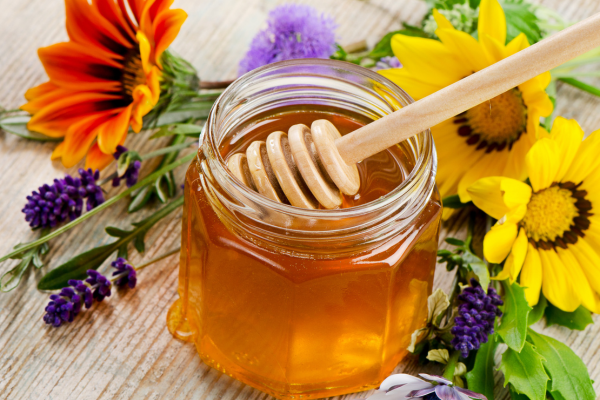
The Difference Between Raw and Processed Honey: What You Should Know
Honey is one of nature’s most remarkable gifts, enjoyed for its delicious taste and numerous health benefits. However, not all honey is created equal. At Honey For Life, we believe in educating our customers about the different types of honey available, particularly the key distinctions between raw and processed honey.
If you’ve ever wondered which type of honey is best for you, this guide will break down the differences and help you make an informed choice.
What is Raw Honey?
Raw honey is honey in its purest form – straight from the hive with minimal processing. It is strained to remove large debris like beeswax or bee parts but retains all its natural enzymes, antioxidants, and nutrients. Unlike processed honey, raw honey is not subjected to high heat or extensive filtration, preserving its natural goodness.
Key Characteristics of Raw Honey:
-
Unheated and Unpasteurised – Retains its natural enzymes, vitamins, and beneficial compounds.
-
Contains Pollen and Propolis – These elements add extra nutrients and potential health benefits.
-
Varies in Texture and Colour – Can be creamy, crystallised, or fluid depending on floral source and storage.
-
Rich in Antioxidants – Supports overall wellness and immune health.
What is Processed Honey?
Processed honey undergoes various treatments such as pasteurisation and ultra-filtration to enhance its shelf life, improve clarity, and prevent crystallisation. While these processes can make honey look smoother and more uniform, they may also remove some of its natural health benefits.
Key Characteristics of Processed Honey:
-
Heated and Pasteurised – Often exposed to high temperatures to slow down crystallisation and increase shelf life.
-
Filtered for Clarity – Removes pollen and other particles, resulting in a clearer appearance.
-
Longer Shelf Life – Stays liquid for a longer period compared to raw honey.
-
May Contain Additives – Some commercially processed honey may include sweeteners or corn syrup.
Health Benefits of Raw vs. Processed Honey
1. Nutrient Content
Raw honey is packed with enzymes, vitamins, and minerals that contribute to its health benefits. The pasteurisation process in processed honey can destroy some of these nutrients, making it less beneficial compared to raw honey.
2. Antioxidant Properties
Raw honey contains antioxidants such as flavonoids and phenolic acids, which help combat oxidative stress and support overall health. Processed honey loses some of these valuable compounds due to heat treatment.
3. Allergy Relief
Local raw honey contains trace amounts of pollen, which may help people build immunity against seasonal allergies. Processed honey, on the other hand, is often filtered to remove pollen, reducing its potential benefits for allergy sufferers.
4. Digestive Health
Raw honey contains natural prebiotics that support gut health and digestion. Pasteurised honey may lack these beneficial compounds due to heat exposure.
5. Antibacterial and Wound Healing Properties
Both raw and processed honey have antibacterial properties, but raw honey – especially varieties like Manuka honey – has higher levels of active enzymes that aid in wound healing and overall health.
Which Honey is Right for You?
Choosing between raw and processed honey depends on your personal preferences and intended use.
-
If you prioritise health benefits and natural enzymes, raw honey is the best choice.
-
If you prefer honey with a smooth texture and longer shelf life, processed honey may be more convenient.
-
For medicinal purposes, opt for high-quality raw honey varieties like Manuka honey.
How to Identify High-Quality Honey
To ensure you’re getting pure and high-quality honey, follow these tips:
-
Check the Label – Look for terms like “raw,” “unpasteurised,” or “unfiltered” for natural honey.
-
Buy from Trusted Sources – Purchase from reputable brands like Honey For Life, known for providing premium raw honey.
-
Observe the Texture – Raw honey may crystallise over time, which is a sign of its purity.
-
Read the Ingredients – Avoid honey that contains additives or high fructose corn syrup.
Raw vs Processed Honey FAQs
1. Does raw honey expire?
No, raw honey has an indefinite shelf life when stored properly. Over time, it may crystallise, but this does not affect its quality or safety.
2. Can I use raw honey for cooking?
Yes, but heating raw honey above 40°C can destroy some of its beneficial enzymes. If used for health benefits, it’s best consumed raw.
3. Why does raw honey crystallise?
Crystallisation is a natural process that occurs when glucose separates from water. It’s a sign of pure, high-quality honey and can be reversed by gently warming the honey jar in warm water.
4. Is processed honey bad for you?
Processed honey is still a better alternative to refined sugar, but it lacks some of the natural enzymes and nutrients found in raw honey.
Making the Right Choice
Raw honey and processed honey each have their advantages, but if you’re looking for a product packed with nutrients and health benefits, raw honey is the superior choice. At Honey For Life, we are committed to providing premium, natural honey that retains all its wholesome goodness.
Discover the magic of raw honey today. Visit Honey For Life to explore our range of high-quality honey products and experience the natural benefits firsthand.